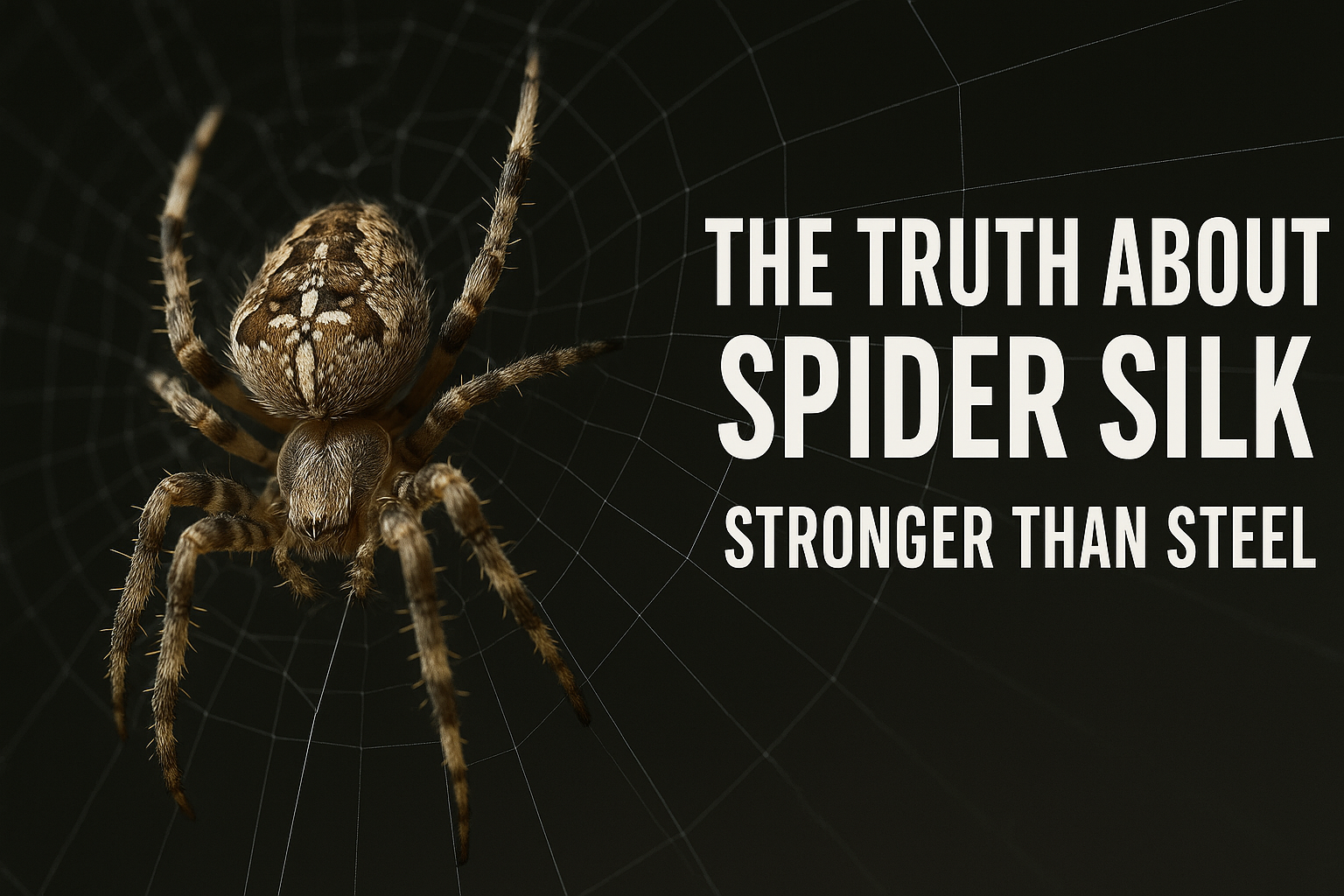Spider silk is one of nature’s most extraordinary materials—five times stronger than steel, tougher than bulletproof Kevlar, and more flexible than rubber. Yet, despite its incredible properties, scientists still struggle to replicate it artificially. What makes spider silk so unique, and how could it revolutionize industries from medicine to aerospace?
This article uncovers:
-
The science behind spider silk’s unmatched strength
-
Why it’s nearly impossible to farm spiders for silk
-
Groundbreaking attempts to bioengineer synthetic spider silk
-
Real-world applications changing medicine and technology
1. Spider Silk vs. Steel: The Ultimate Showdown
Spider silk’s strength is legendary, but how does it compare to man-made materials?
| Property | Spider Silk | Steel | Kevlar |
|---|---|---|---|
| Tensile Strength | 1.3 GPa (Dragon Silk) | 0.4 GPa | 3.6 GPa |
| Elasticity | 30% stretch before breaking | <1% stretch | 3.5% stretch |
| Weight | 6x lighter than steel | Heavy | Light but stiff |
Key Insight:
-
Spider silk absorbs more energy before breaking than steel or Kevlar, making it ideal for impact resistance.
2. The Different Types of Spider Silk (And Their Superpowers)
Not all spider silk is the same—different glands produce specialized types:
✔ Dragline Silk – Used for web frames, strongest of all silks.
✔ Capture Silk – Sticky and stretchy, traps prey.
✔ Egg Sac Silk – Soft and protective for spiderlings.
✔ Aciniform Silk – Used to wrap prey, toughest against punctures.
Fun Fact: The Darwin’s bark spider produces silk twice as tough as any other, capable of spanning rivers.
3. Why We Can’t Farm Spiders Like Silkworms
Despite its potential, spider silk is notoriously hard to mass-produce:
✔ Cannibalism – Spiders eat each other if kept in close quarters.
✔ Low silk output – A single spider produces only 0.0002g per day.
✔ Unpredictable quality – Each spider’s silk varies slightly.
Failed Attempt:
-
In the 1700s, a French king tried making spider silk gloves—it took 1.2 million spiders to weave just one pair.
4. Bioengineering Breakthroughs: Artificial Spider Silk
Since farming spiders isn’t viable, scientists are turning to:
A. Genetically Modified Bacteria & Yeast
-
Companies like Bolt Threads engineer microbes to produce silk proteins.
-
Current issue: Artificial silk is strong but lacks natural silk’s full elasticity.
B. Goats with Spider Genes
-
Canadian scientists created transgenic goats that produce spider silk proteins in their milk.
-
Challenge: Extracting and spinning the silk remains difficult.
C. Synthetic Polymer Mimics
-
Researchers at MIT developed a hydrogel-based silk substitute.
-
Potential use: Biodegradable medical sutures.
5. Real-World Applications: From Bulletproof Vests to Brain Implants
Spider silk’s properties make it ideal for:
✔ Military & Aerospace – Lighter, stronger body armor and parachutes.
✔ Medicine – Dissolvable stitches, artificial tendons, and nerve regeneration scaffolds.
✔ Fashion – Sustainable, high-performance fabrics (Adidas once made a spider silk sneaker prototype).
✔ Eco-Friendly Plastics – Biodegradable alternative to synthetic polymers.
Latest Innovation (2024):
-
A Japanese team created a spider silk-based hydrogel that could repair spinal cord injuries.
6. Could Spider Silk Replace Steel One Day?
While spider silk won’t build skyscrapers, it could:
✔ Reinforce composites in cars and planes.
✔ Replace microplastics in cosmetics.
✔ Revolutionize wearable tech with ultra-thin, durable sensors.
Biggest Hurdle: Scaling production while maintaining quality.
Conclusion: Nature’s Perfect Material—If We Can Master It
Spider silk remains one of biomimicry’s greatest challenges. As science inches closer to replicating its magic, we may soon see a world where spider silk stitches up wounds, armors soldiers, and even weaves the clothes of the future.
Next time you see a spiderweb, remember: you’re looking at one of evolution’s finest engineering marvels.




Leave a Comment